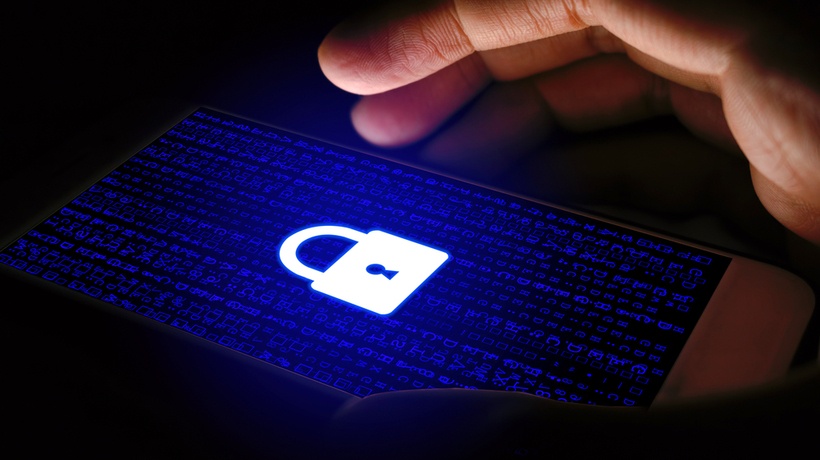6 Cybersecurity Training Tips That Work
It might sound like a joke, but it isn’t. According to the WEF2019 Global Risks Report, cyberattacks are the number five global threat over a 10-year horizon. Data fraud or theft comes in fourth. If your company hasn’t been attacked yet, consider yourselves lucky.
Different industries are prone to different methods of attack. But one thing is sure: cybercriminals make no exceptions. From small businesses to public entities, they have all been victims. The consequences? Business downtime, significant financial losses, and tarnished reputations.
Employees are often under the impression that the IT department can fix everything, or that antivirus software is all-powerful. None of this is true. Cyberattacks take multiple forms and often escalate in unexpected ways. For example, they often start with an email and continue with a phone conversation.
You can’t prevent a cyberattack from coming your way. But comprehensive information security training for employees can minimize human error and increase your response capability.
In this post, you’ll discover 6 cybersecurity training tips to educate employees and safeguard your company from modern cyber threats.
1. Make It Mandatory For All
You wouldn’t teach fire safety to a selected few, right? In the same spirit, treat cybersecurity with the same seriousness that you treat compliance. Make it a top priority and mandatory for everyone.
Employees should be aware of all common types of threats, regardless of their position in the company—starting from your security personnel that is responsible for the physical aspects of cybersecurity. Anyone using a computer should know about basic password security and safe internet browsing practices. Identifying suspicious links and phishing attempts is also essential, as the latter has significantly risen in number.
Do you have a BYOD (Bring Your Own Device) policy or allow remote work? Careless use of public Wi-Fi equals generously sharing all your passwords, emails, and other data with a hacker. Make sure all employees know the dangers and how to protect their data against them.
If necessary, make your training department-specific. For example, dive deeper into social engineering scams when training high-level executives. They are the most exposed and, therefore, at a higher risk of financially motivated attacks. Your IT department should be trained to an expert level, especially if you don’t have a dedicated cybersecurity team.
2. Include Cybersecurity Awareness In Onboarding
Cybersecurity training for employees can’t wait. A cyberattack can occur at any minute. And guess who’s more likely to slip.
New employees are usually anxious and still adapting to their new work environment. Understandably, cybersecurity is not their main concern. That means they might be careless about things like passwords or physical security. They’re also easier victims of social engineering attacks because they haven’t established who is doing what in the company.
Raising cybersecurity awareness during onboarding ensures there are no discernible weak links among your staff. It’s also a way to communicate to employees that cybersecurity is a shared and ongoing responsibility.
Onboarding is also the best time to promote cybersecurity practices that extend beyond your company. Employees should realize that online security is a fundamental issue. Prompt them to apply the tips that you share to protect their own data and devices as well.
3. Create Simulations To Improve Team Readiness
One of the key tips for cybersecurity training is offering employees opportunities to prepare for pressing situations. For example, everyone can refrain from clicking on a link from an unknown sender. But what will they do when the sender impersonates an associate and insists that you owe them money?
It’s easy to handle this situation when it pops up in a quiz. Obviously, you refuse to authorize the money transfer. In real life though, the employee might get flustered or succumb under pressure. Unless they’ve encountered this before.
Simulation exercises can be developed internally or in coordination with external cybersecurity experts. They’re usually based on your history of attacks. Depending on their complexity, they can last a few hours or even weeks. Your teams must apply a predefined communication strategy and make critical decisions to eliminate the threat.
And what makes simulations so beneficial? They expose employees to high-pressure and escalating situations that often involve more than one attack—like data theft and ransomware. Having relived this scenario during a simulation prepares them for when an actual attack occurs.
Simulated incidents additionally help you gauge weaknesses in your teams’ defense capabilities. Use the results to adjust your current cybersecurity program, structure an effective response plan, and improve team readiness.
4. Use The Right Mixture Of Content
Like all types of training, cybersecurity training should be flexible and not disrupt the workflow. To achieve that, deliver it online. And, because you’ve got to practice what you preach, choose a secure LMS with advanced data protection features.
An LMS like TalentLMS can help you create effective training in all sorts of ways. For example, you can upload short videos to showcase examples of cyberattacks and their consequences. Real-world examples will help employees realize the magnitude of the problem.
Create infographics for topics that don’t require extensive analysis. For example, “how to identify a phishing email” or “how to spot an infected system.” Employees can use them as a quick reference point when they sense that something is off.
Fighting cybercrime has a game-like quality, don’t you think? Take advantage of this to turn cybersecurity training into a quest for knowledge. Use points to unlock levels of increased difficulty, and reward with badges those who identify the most threats.
At the same time, no questions about online security should be left unanswered. Bring in a cybersecurity expert who will responsibly answer any questions your employees might still have. You can conduct either an on-site training session or a live webinar. Make the most of it by recording the event and uploading the video on your LMS.
5. Assess Employee Knowledge
Among other critical cybersecurity training tips is measuring the success of your program. You can always wait and measure employee performance during actual attacks. Or, you can play it safe and attack first.
That’s right. Orchestrate social engineering and phishing attacks to see how everyone will respond. Are employees double-checking the email sender? Are they disclosing sensitive data?
Collaborate with a third party to check physical security preparedness. Check if your security personnel allows people to enter the company without identification. Or, how employees react when they see an unaccompanied visitor in personnel-only areas.
Know that mistakes will happen. That’s why it’s important to have a database where employees can log all incidents. Study the data to identify common points of attack and employee weaknesses. Then, tweak your training program accordingly. You can even create case studies of these incidents without disclosing the people involved.
6. Make Staff Cybersecurity Training An Ongoing Process
Employees might develop a false sense of safety as time goes by. Eventually, they’ll lower their guard against cyberattacks and become easier targets. One of the most important cybersecurity training tips is repeating security awareness training regularly. This way, you’ll keep your staff armed and ready for any attack.
In the meantime, send employees occasional emails with basic “cyber-hygiene” rules. For example, reminders to change their passwords or update antivirus software. Also, keep your eyes open for new, high-profile incidents and communicate them to employees.
The methods of attack don’t change dramatically overnight. But cybercriminals shift their focus to more profitable targets or easier points of entry. For example, payment-card related breaches through web applications have increased. While previously, the main point of entry was physical terminals.
Employees are better prepared when they’re up to speed. Update your content often to inform them of new tactics and offer improved tips. Sounds like too much trouble? Not if you deploy training on an LMS.
Conclusion
Recent history has shown that a cyberattack is just a matter of time. Being able to detect a threat early on and take action can significantly mitigate its impact. Implement these cybersecurity training tips to raise awareness among employees and build a strong line of defense. Don’t waste another day—the fight against cybercrime has already begun!










